As much as I prefer seeing concerts in small clubs, I have to admit there’s something really cool about the communal feeling you get when you’re with thousands and thousands of other people who all like the same musical artist — especially when the musicians are putting on a hell of a show, singing and playing with unbridled passion, and the crowd is responding with thunderous applause. A sea of arms waving to the music. Groups of people dancing. Audience members singing along with the choruses, shouting things like “OH OH OH OH OH OH OH OH OH OH OH OH OH OH OH OH OH OH OH!!!” far louder than they ever sang anything in church or school. If you happen to be stuck in such a scene at a show where you don’t like the music, it can feel rather hellish, as if you’re surrounded by the brainwashed members of a religious cult.
But if your musical tastes are in synch with the throng around you, the feeling can be transcendent. For at least this brief time — at most an hour or two, maybe a few minutes in the middle of a concert — it feels like the world is right. And if you’ve ever felt like a musical snob, hoping that the masses don’t discover those favorite obscure bands you’re hoarding like a secret — if you’ve ever felt like a musical weirdo because the bands you really like rarely play at venues bigger than the Hideout and never get played on the radio — then suddenly this big concert experience makes you feel like some sort of crowd-loving populist. It is possible for big masses of people to like the same music that I do! And it isn’t somehow ruining the music, as I’d feared it would. The world is right. But then, of course, the concert ends. And you start slipping back into the same old attitudes you’d had before. For a moment, it seemed like you were in synch with the rest of humanity. Now… Well, you’re not so sure about that anymore, but at least you know it can happen for a few minutes.
At Lollapalooza this past weekend, that experience came for me during the Sunday-night finale by the Arcade Fire. This was the fifth time I’ve seen the Arcade Fire, and I’m not sure if they’ll ever top the first two amazing shows I saw them do, at the Empty Bottle in 2004 and Lollapalooza 2005. Surely, by now the Arcade Fire must have mellowed a bit.
But damn if they didn’t put on an intense show on Sunday, the very sort of barnstorming set that helped to make them popular in the first place. They were more careful with their antics than five years ago — Will Butler did not jump into the photo pit wielding a microphone stand, as he did at Lollapalooza 2005, coming close to dinging me in the head. (Here’s a video of that moment; I believe I must be just outside the frame.) And as far as I was able to observe, no helmets were required since no one was drumming on anyone else’s head this time.
But the seven musicians in the Arcade Fire are still swapping instruments and working up a sweat as they pound away with their violins, guitars, keyboards and even a hurdy-gurdy.
The songs from the new album The Suburbs sounded strong, but older songs provided the cathartic climax of the concert, as the audience sang along with “Rebellion (Lies)” and “Wake Up.” It was as if the crowd was defying the lyrics Win Butler had sung earlier in the new song, “Month of May” — “Now, some things are pure and some things are right/But the kids are still standing with their arms folded tight.” These kids were not just standing there with their arms folded tight.
What followed, as Lollapalooza ended, was a crush of concertgoers trying to reach the exit gates. I got stuck in a seemingly immovable mass of people near one of the beer tents. Everyone remained fairly calm and patient, and I finally broke free of the pack. The crowd streamed out into the streets of downtown Chicago. Walking on Monroe along the Art Institute, I was in the midst of some folks who began clapping spontaneously. And then a bunch of us began singing the wordless chorus from “Wake Up.” It felt like we were trying to stretch out that beautiful concert for a few more minutes. Even half an hour later, riding the el home, I think I heard someone whistling “Wake Up.” And then the spell was broken, and the world was back to normal.
PHOTOS OF THE ARCADE FIRE AT LOLLAPALOOZA.
More blog posts coming soon, including: Music Divides Us … And more from Lollapalooza 2010.
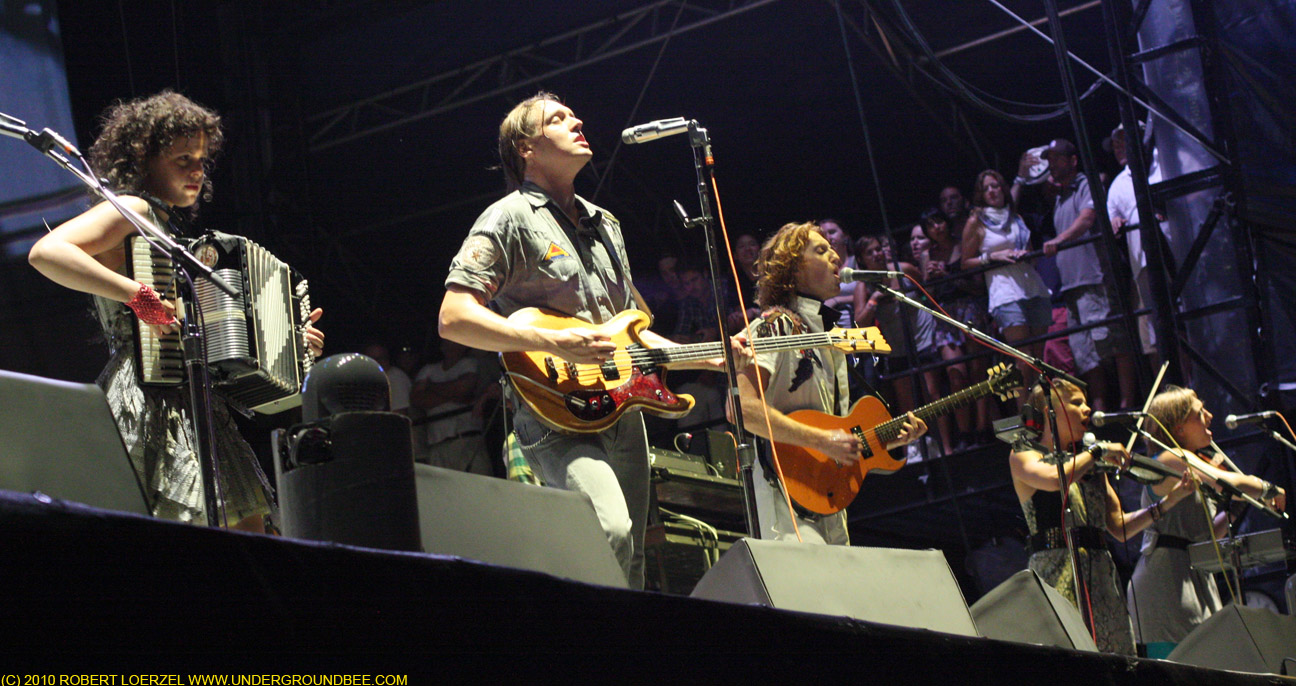
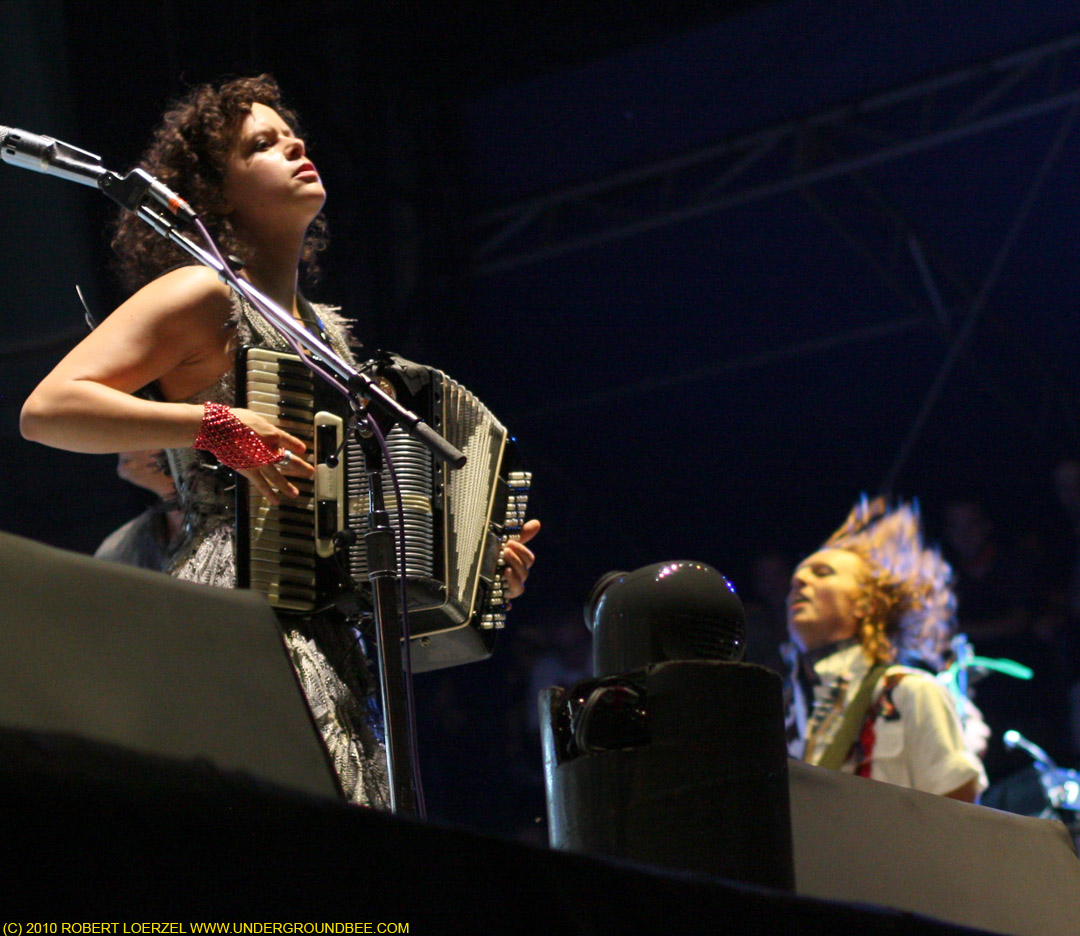
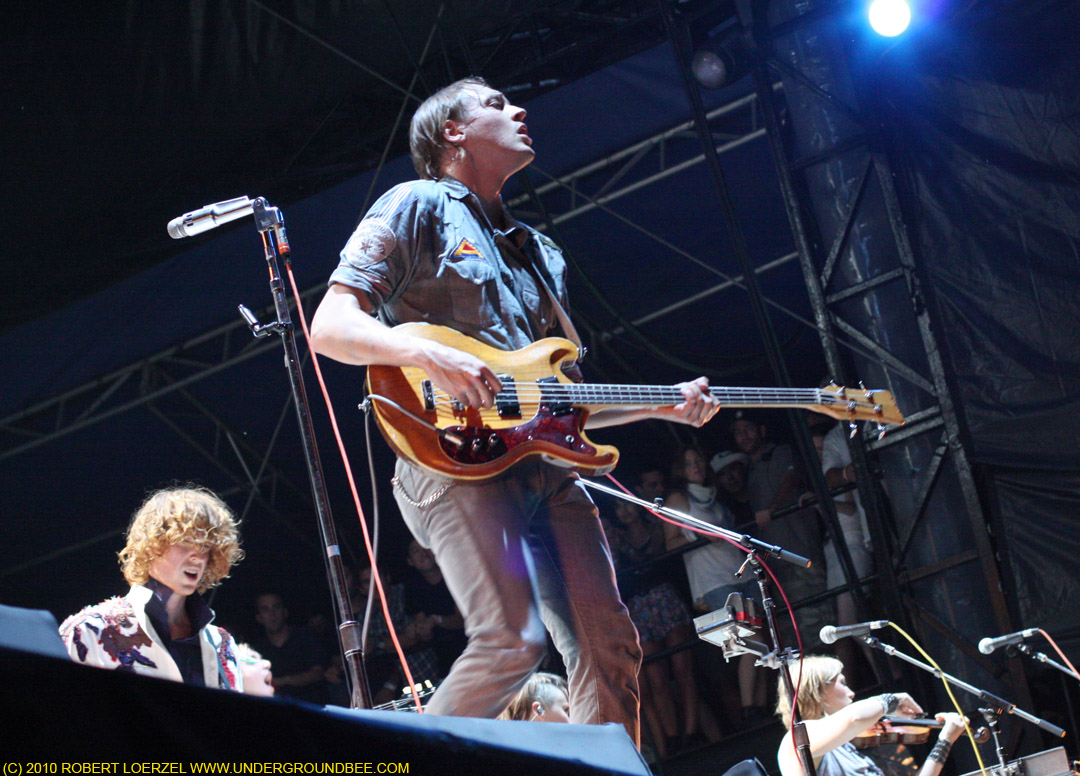
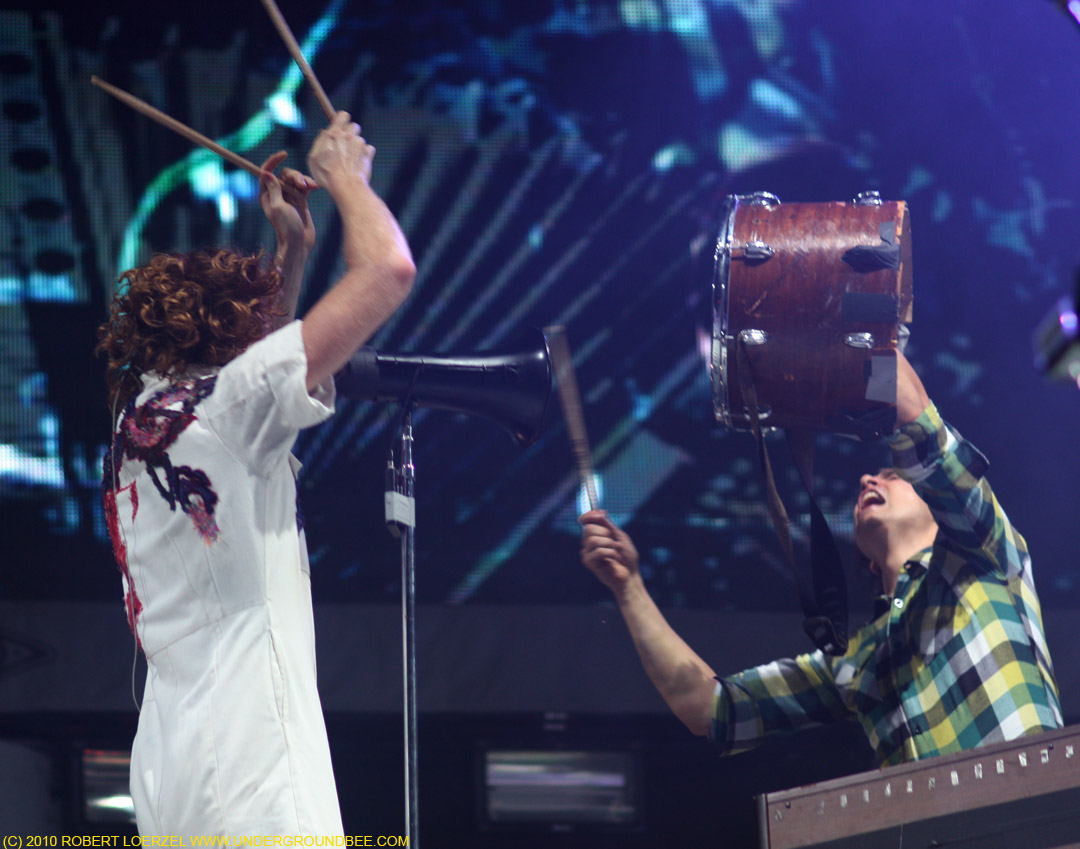

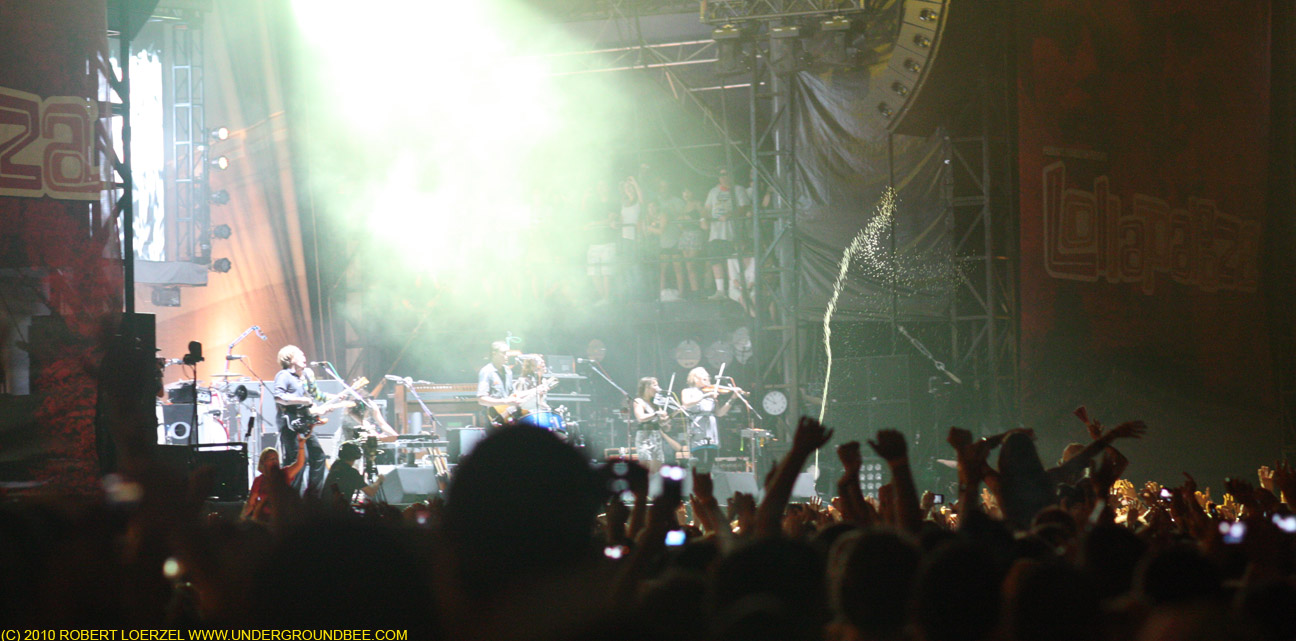
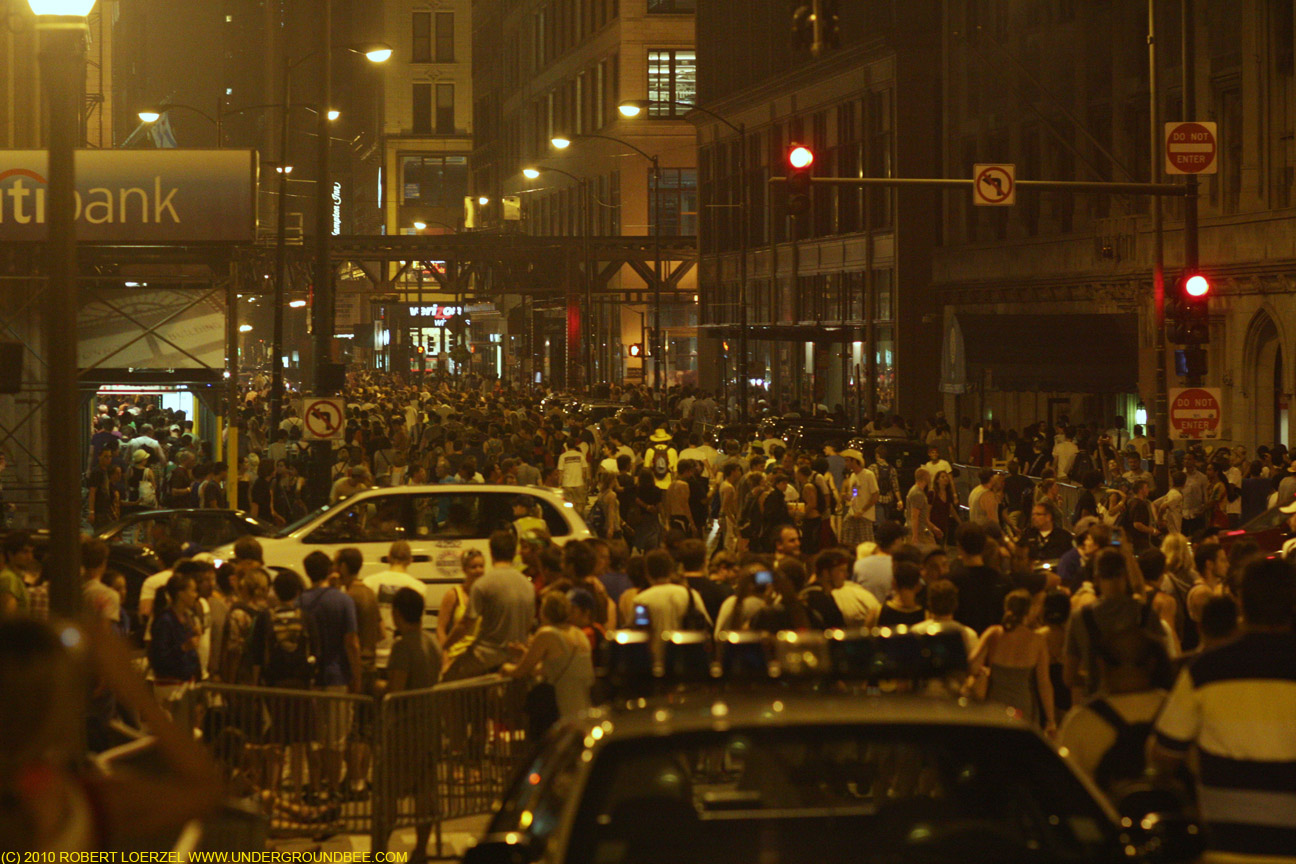
 As the Arcade Fire was setting up its equipment on the Empty Bottle’s stage, one had to wonder: Just what are those motorcycle helmets for? Are stunts of some sort going to be performed? Yes, indeed … and protective headgear would be required.
As the Arcade Fire was setting up its equipment on the Empty Bottle’s stage, one had to wonder: Just what are those motorcycle helmets for? Are stunts of some sort going to be performed? Yes, indeed … and protective headgear would be required.